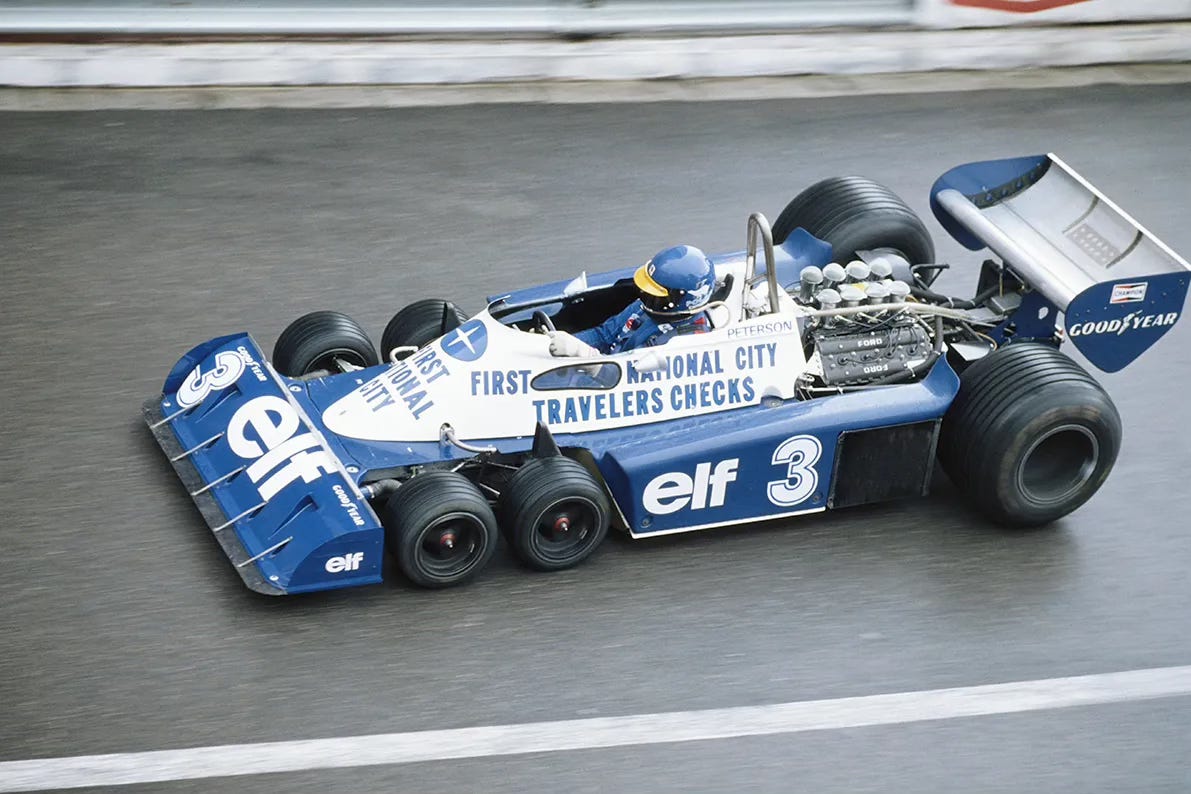The Car with Six Wheels: Tyrrell’s Radical P34
“Ken roared with laughter as I stood there speechless…"
In an era where nearly every car save Ferrari used the same Cosworth DFV engine, Hewland gearbox, and Goodyear tyres, Derek Gardner – Tyrrell’s chief designer - was forced to seek an advantage elsewhere. Though short-lived, the P34 lives on as one of Formula one’s most iconic radical experiments, a true display of engineering bravery and a symbol of 1970s innovation.

In the mid-seventies, F1 introduced a new regulation that stated that the front wing was to be no more that 1.5 m wide, which would cause the wheels to stick out above and to the sides of the wing. This would reduce aerodynamic properties and increase tyre age. Gardner’s concept: smaller front wheels tucked behind the front wing. Not only would this reduce lift and drag, but it would also allow for less aerodynamic aid at the nose, resulting in a gain equivalent to about 40 hp. The reason for using four wheels instead of two meant that front grip and braking area would be restored and even boosted, as it would have twice as much contact patches.
Startling results
The P34 had its debut race at the 1976 Spanish GP with Depailler testing in one chassis, and turned heads instantly. The full campaign later that year at the Belgium GP also featured Jody Scheckter. In only its fourth race at Anderstorp, Sweden, the P34 claimed a 1-2, with Scheckter piloting the six-wheeler to a dominant win. Across two seasons, Tyrrell scored one pole, one win, 14 podiums, finishing third in both drivers’ and constructors’ championships in 1976.
However, the custom 10-inch Goodyear tyres lagged in development – they wore quickly and were far behind the standard tyres. Furthermore, the complex front suspension added weight, causing the brakes to overheat during harder use. On top of that, performance suffered immensely on bumpy tracks, the standard at the time, with grip oscillating. Scheckter complained, calling it a “piece of junk”, and “unpredictable”.
Downfall and legacy
The revisions in 1977 made the car heavier and more unreliable; podiums dropped, and retirements surged. Finally, a lack of tyre development sealed its fate: by 1977, Goodyear stopped supporting custom front tyres, and the project withered. By the end of ’77, Tyrrell abandoned the design. Soon after, the FIA banned cars with more or fewer than four wheels.
The radical design prompted others to explore multi-wheels ideas until regulations shut them down - as the FIA banned cars with more or fewer than four wheels. Today the P34 is a museum icon, and at historic events replicas are built to period specs and even raced. The P34 remains one of the most daring experiments in Formula One’s history, and stands as a testament to the radical innovation and experimentation that shaped the history of motorsports.

